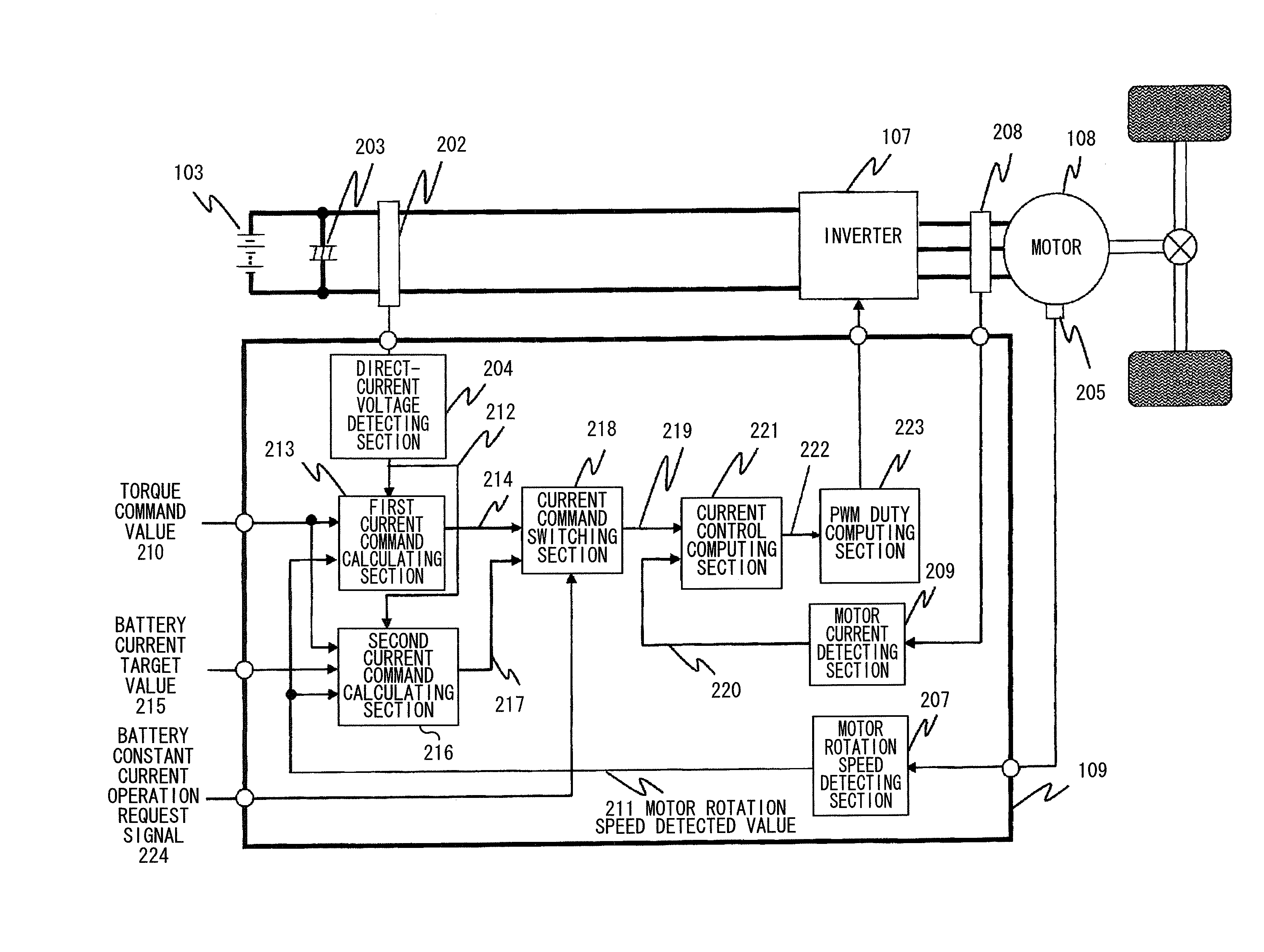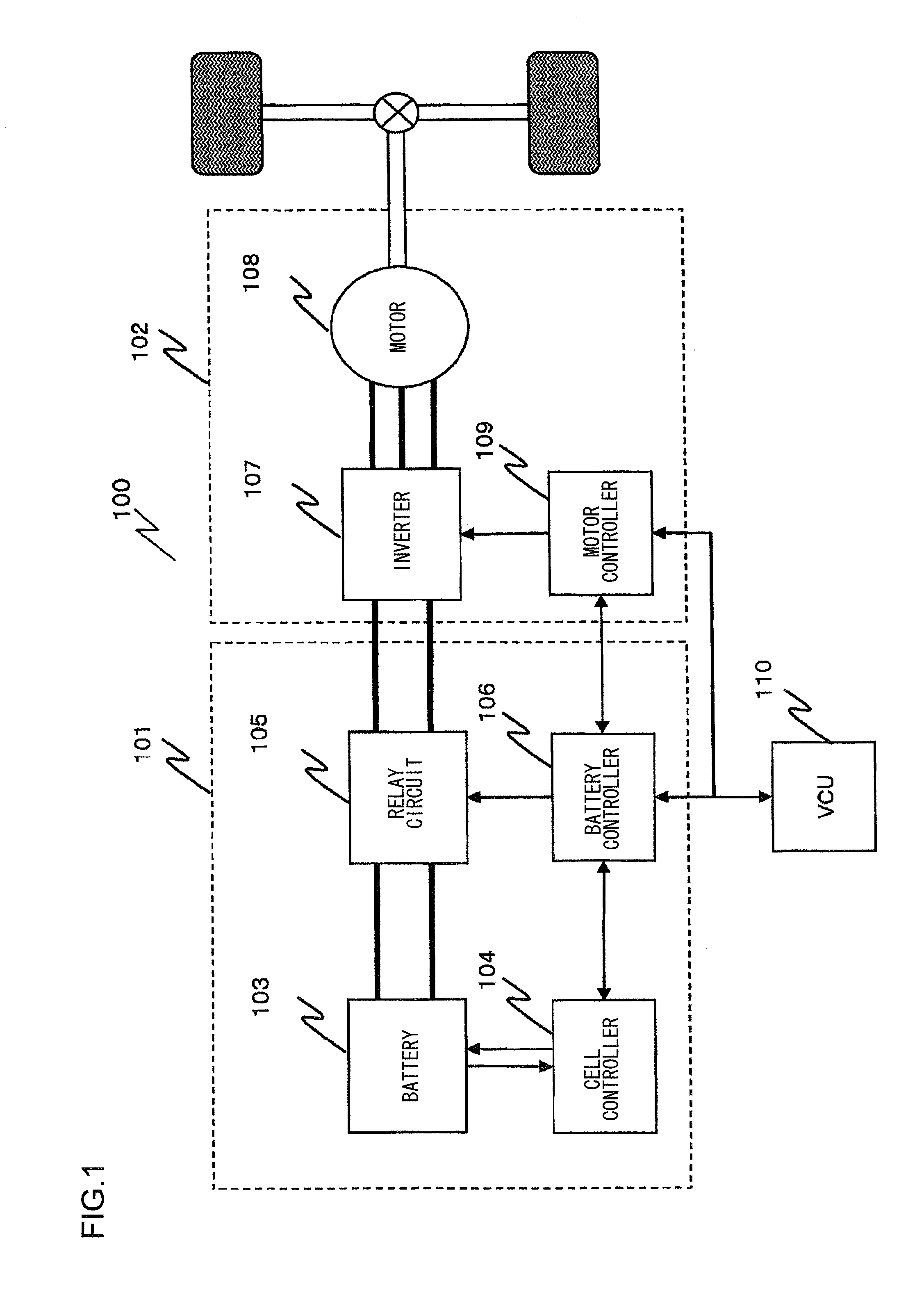Motor Control Device
a control device and motor technology, applied in the direction of capacitor control, dynamo-electric converter control, instruments, etc., can solve the problems of difficult detection of ccvs of all secondary battery cells, gradual accumulation of errors, etc., to reduce battery cost, simplify structure and control of battery cells, and calculate soc further accurately
- Summary
- Abstract
- Description
- Claims
- Application Information
AI Technical Summary
Benefits of technology
Problems solved by technology
Method used
Image
Examples
first example
[0086]FIG. 7 is a flowchart for explaining the constant current operation permission in the motor control device when a vehicle is in a hill-hold travel.
[0087]The external controller 110 determines whether or not the vehicle is currently in the hill-hold travel (a step S701). If it is determined that the vehicle is in the bill-hold travel (YES in the step S701), a battery constant current operation permission status is set to “PERMITTED” (a step S703).
[0088]On the other hand, if the vehicle is not in the hill-hold travel (NO in the step S701), the battery constant current operation permission status is set to “PROHIBITED” (a step S702). The external controller 110 transmits the battery constant current operation status to the motor controller 109 and the battery controller 106 (a step S704).
second example
[0089]FIG. 8 is a flowchart for explaining the constant current operation permission in the motor control device when the vehicle is in a hill-climb travel.
[0090]The external controller 110 determines whether or not the vehicle is currently in the hill-climb travel (a step S801). If it is determined that the vehicle is in the hill-climb travel (YES in the step S801), the battery constant current operation permission status is set to “PERMITTED” (a step S803).
[0091]On the other hand, when the vehicle is not in the hill-climb travel (NO in the step S801), the battery constant current operation permission status is set to “PROHIBITED” (a step S802). The external controller 110 transmits the battery constant current operation status to the motor controller 109 and the battery controller 106 (a step S804).
third example
[0092]FIG. 9 is a flowchart for explaining the constant current operation permission in the motor control device when the vehicle is in a downhill travel. When the vehicle is in the downhill travel at the constant speed, the motor 108 does not operate by receiving the AC current from the inverter 107 but performs the regenerative operation. However, due to the constant speed, a power generation amount of the motor 108 is constant, and the DC current flowing through the battery 103 is stabilized as in the constant current operation of the motor 108; therefore, the CCV of the secondary battery cell that forms the battery 103 can be measured accurately.
[0093]The external controller 110 determines whether or not the vehicle is currently in a downhill travel (a step S901). If it is determined that the vehicle is in the downhill travel (YES in the step S901), the battery constant current operation permission status is set to “PERMITTED” (a step S903).
[0094]If the vehicle is not in the dow...
PUM
 Login to View More
Login to View More Abstract
Description
Claims
Application Information
 Login to View More
Login to View More - R&D
- Intellectual Property
- Life Sciences
- Materials
- Tech Scout
- Unparalleled Data Quality
- Higher Quality Content
- 60% Fewer Hallucinations
Browse by: Latest US Patents, China's latest patents, Technical Efficacy Thesaurus, Application Domain, Technology Topic, Popular Technical Reports.
© 2025 PatSnap. All rights reserved.Legal|Privacy policy|Modern Slavery Act Transparency Statement|Sitemap|About US| Contact US: help@patsnap.com



